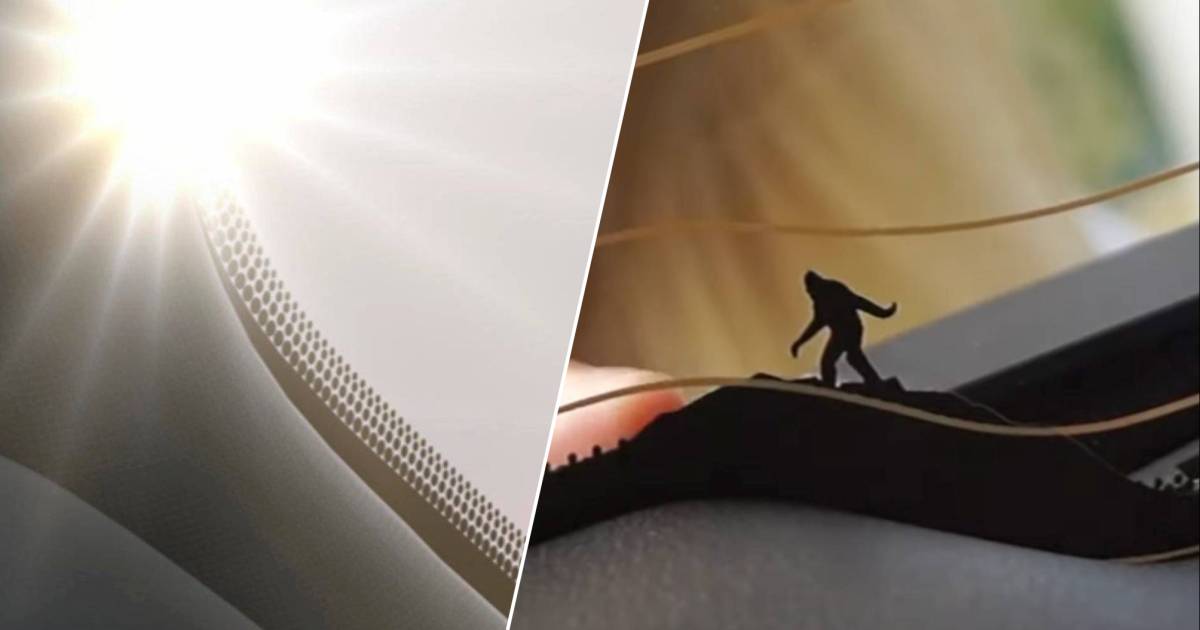Anyone who has looked at the edge of a windshield or rear window has likely seen it: those black dots. It is not just a decoration. So what are they? You can read that here.
Sticky vs. Glued
For a long time, car windows have been enclosed in a rubber rim. In older cars you can see it clearly around the front and back windows. This trim made the front and rear windows watertight and kept them in place. But since the 1980s and 1990s, these “pin-on” windows have been largely replaced by stick-on windows. This is the standard practice now.
Glued windows actually offer a lot of advantages. The styling is smoother, and the aerodynamics are better. Because that thick edge is no longer around. It also means that the window can be part of the bodywork. In other words: the window also absorbs forces. This ensures better driving and safer cars.
Of course it’s ugly to see the glue under the window. Therefore, its edges are covered with black paint. And immediately a pattern with balls appeared. The front and rear windows have such a black trim, but you also see them with three-quarter windows and glass roofs. And this is the case with almost all cars. Not just for aesthetic reasons, but because they are essential.
The gradual transition from the opaque to the transparent part of the window has to do with temperature
Smooth transition
The black border and associated dots are printed on the window. Next, the paint is brushed onto the window, making it nearly impossible to remove. The edge is always inside the window. It hides the glue from view and forms a surface on which the glue can adhere better.
The polka dot pattern ensures a gradual transition from the opaque to the transparent part of the window, and this transition has something to do with temperature. The black part heats up faster than the transparent part. Anything that heats up wants to expand. Also glass.
The plasterboard cannot move in its seat to absorb heat. This creates additional tension in the glass. This in itself is not a problem: the glass is strong enough. But if the transition between the completely black painted part and the transparent part is abrupt, there can be such a large temperature difference (on such a small surface) that the window can crack or break.
Thus the polka dot pattern also ensures that the temperature difference – of more than a centimeter or two – is gradual. It is enough to eliminate the risk of glass breaking due to this temperature difference. Exceptions are sometimes made only in specific situations (on darker tinted glass, for example).
Some designers add fantasies: Yeti stalks Jeep’s Renegade’s rear window.
Should it be bubbles?
The entire auto industry uses the polka dot pattern. This makes sense, because presses (the pattern is, as it were, printed inside the window) work that way. Theoretically, you could do another pattern with the same effect, but that just won’t happen.
What has happened sometimes lately is that car designers add fantasies. For example, they put an additional drawing on the pasted windowsill. This actually costs nothing, because the print pattern has to be done again for each car window. As long as the fee is small, there is no increased risk of problems. For example, in the compact Renegade, Jeep puts the silhouette of an old military jeep in the corner of the windshield, while the Yeti peeks out into the darkened rear window.
Read also:
With these 20 tips, you can keep your car in top condition for as long as possible
Doesn’t it itch? This simple trick against a frozen window is still the most effective
Is your car also full of desert dust? This is how you clean it without scratches or streaks (+)
Unlimited free access to Showbytes? Which can!
Log in or create an account and never miss a thing from the stars.

“Thinker. Coffeeaholic. Award-winning gamer. Web trailblazer. Pop culture scholar. Beer guru. Food specialist.”







More Stories
Comet Tsuchinshan-Atlas is ready to shine this fall
Sonos isn’t bringing back its old app after all
Indiana Jones and the Great Circle is coming to PS5 in spring 2025